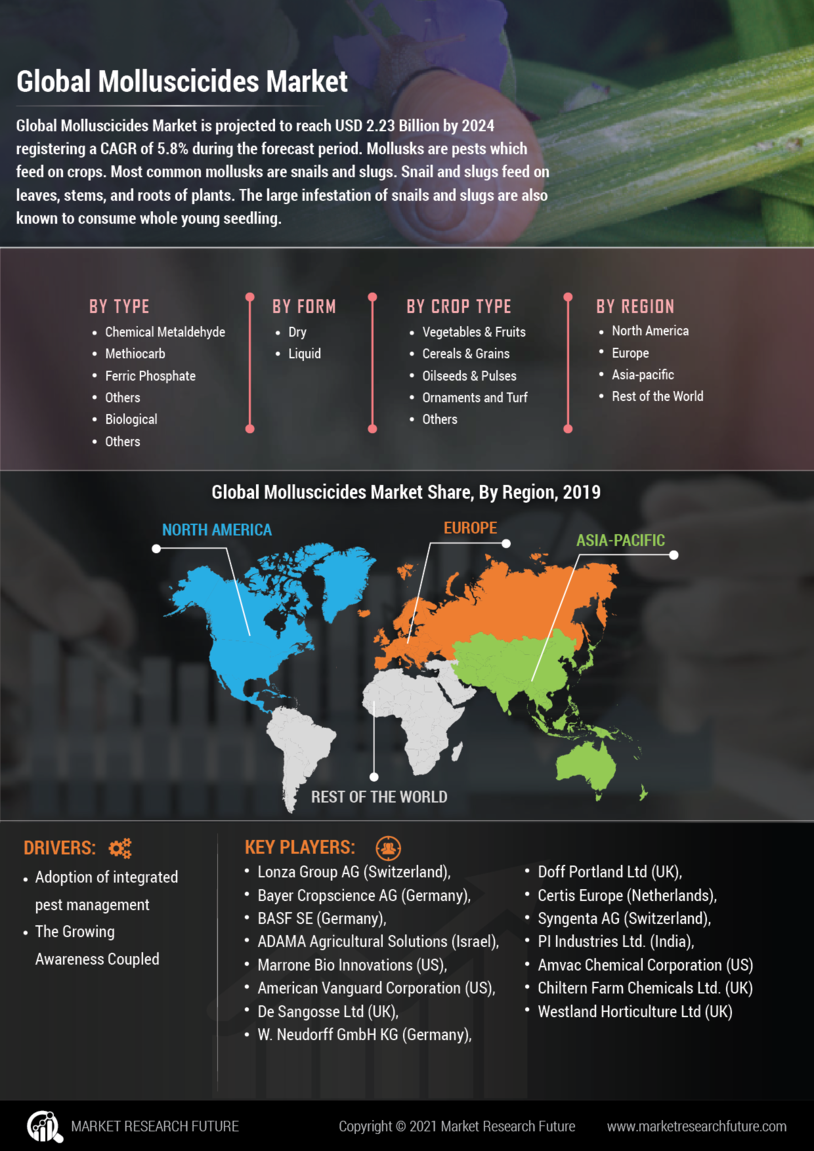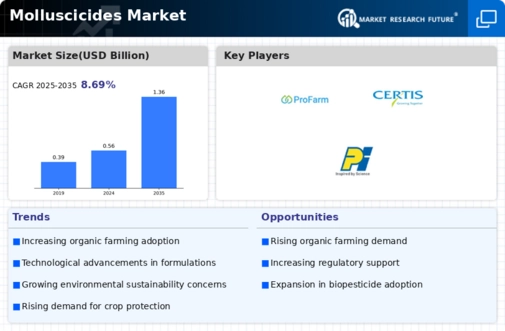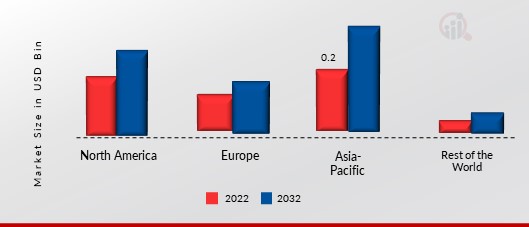Leading market players are investing heavily in research and development in order to expand their product lines, which will help the Molluscicides market, grow even more. Market participants are also undertaking a variety of strategic activities to expand their footprint, with important market developments including new product launches, contractual agreements, mergers and acquisitions, higher investments, and collaboration with other organizations. To expand and survive in a more competitive and rising market climate, Molluscicides Industry must offer cost-effective items.
Manufacturing locally to minimize operational costs is one of the key business tactics used by manufacturers in the Molluscicides Industry to benefit clients and increase the market sector. In recent years, the Molluscicides Industry has offered some of the most significant advantages to medicine. Major players in the Molluscicides market, including Lonza Group AG, Bayer Cropscience AG, BASF SE, ADAMA Agricultural Solutions, Marrone Bio Innovations, American Vanguard Corporation, De Sangosse Ltd, W.
Neudorff GmbH KG, Doff Portland Ltd, Certis Europe, Syngenta AG, PI Industries Ltd., Amvac Chemical Corporation, Chiltern Farm Chemicals Ltd., and Westland Horticulture Ltd, are attempting to increase market demand by investing in research and development operations.
Crop protection solutions are offered by Adama Ltd (Adama), previously Hubei Sanonda Co Ltd, a division of China National Chemical Corp. The business creates, manufactures, and distributes non-patent crop protection products. The product line offered by Adama consists of fungicides, insecticides, and herbicides. Additionally, it manufactures and markets non-agricultural goods like lycopene, speciality fragrance compounds, and other high-quality chemicals.
The company operates in Europe, North America, Latin America, Israel, Asia Pacific, and Africa and offers scientific and technological support for current production processes like weed control, pest control operations, termiticides, and material preservation, placing an emphasis on quality improvement, efficiency, safety, and environmental protection. The headquarters of Adama are in Jingzhou, Hubei, China. In June 2020, ADAMA introduced Gusto IRON, a new ferric phosphate-based molluscicide designed specifically to manage slug populations in the expanding conditions of the United Kingdom.
The purpose of Arxada's speciality chemical company is to enhance the performance of its clients' products. The business offers a broad portfolio of distinctive products targeted at a variety of end uses, including consumer care products, agro ingredients, coatings, and water treatment ingredients. By specialising in microbial control solutions and specialty product solutions, the business helps customers protect their products from harmful microorganisms, enhance health and safety, and lessen their environmental impact. Axcela speciality chemicals were introduced in January 2022 by Arxada, one of the top producers of speciality chemicals in the world and a subsidiary of Lonza Group Ltd.
Wet extrusion is a distinctive process used to create the product.














